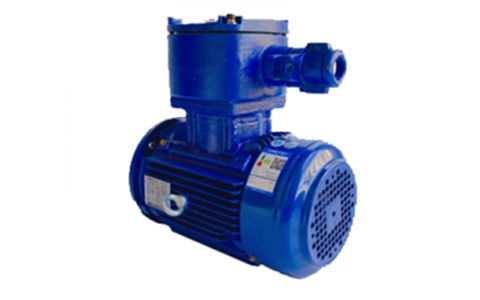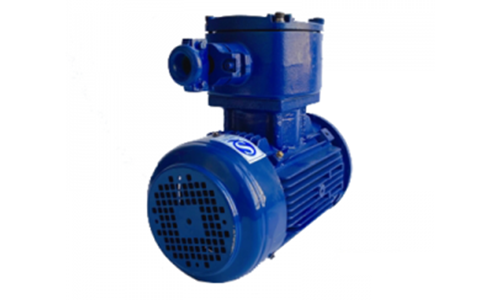What is Motor Efficiency & How to improve it?
Motor Efficiency & How to improve it?
Electric motor is a type of machine which converts electrical energy into mechanical energy using the interaction between magnetic field and current in its winding to produce/generate force in the motor. If we actually reverse this process then mechanical energy is converted into electrical energy and that is done by generators . Electromagnetism is the main phenomenon that is used by motors.
Basic Parts of the Motor:
Coming to the parts of motors, major parts of motor are as follows
Rotor:
This is the moving and important part of the electric motor which rotate the shaft to produce mechanical energy.
Stator:
Stationary part of the motor is stator it either has few windings or has a fixed magnet. Its main core is made of multiple lamination or sheets of different metals to minimize the losses.
Air Gap:
A minute gap between stator and rotor is called air gap. It is necessary to have gap between these two components but it is forced to be as small as it is possible otherwise will have adverse effects on motor Performance.
Commutator:
It basically deals with the process of switching input to DC motor. It is comprised of slip rings that are insulated from each other and from shaft.

So there are multiple types of motors with their own importance.
Types of Motors and their Importance:
As you have seen now that there are many types of motors and we talk about our industries around 70% energy is used by these motors and a huge proportion this energy is wasted. By reducing this wastage, companies not only help the environment, but also cut their costs and improve profitability.
| Self Commutated – AC and DC | Externally Commutated – AC Motors | ||
| Mechanical Two types of motors present in this category which is ac and dc respectively .One is comprised of simple electronics other is Dc chopper or linear transistor. | Electronic They may have paramagnetic or ferromagnetic rotor. They have comprehensive use of electronics in it. | Asynchronous Three phase motors that have capacitors, resistors split and shaded poles but they are not hybrid. | Synchronous They are three phase motors but they have permanent split capacitor and hysteresis and most importantly they are hybrid. |
What is Motor Efficiency:
The ratio between motor Output and Input is called efficiency which is indicated by the symbol of “η” and represented in the “%”. or
This is the factor which tells about performance of the motor. It is the ratio between output and input power at shaft it can be written as efficiency (e) = output power / input power i.e.
Motor Efficiency = Motor Eff = Motor Out Put Power / Motor Input Power
Motor efficiency is denoted by the symbol of eta= η.
Efficiency = η = (Output / Input) x 100
Or
Efficiency = η = Input – Losses / Input
Or
Efficiency = η = Output / Output + Losses.
There is no such a machine without losses. thus, the value of output of a machine is always less than the input. i.e.
Output = Input – Losses
In other words;
Input = Output + Losses
Therefore, we can write the efficiency formula as well.
Efficiency = η = Input – Losses / Input
Or
Efficiency = η = Output / Output + Losses.
Condition for Maximum Efficiency of the Motor:
Power Stages in DC Motors and their Efficiencies.
Losses occur during conversion of electrical energy into mechanical energy in electrical motor. These losses and conversion of energy in the motor is known as the power stages of a DC motor which is shown in the below diagram.
Explanation of Power stages and Different Efficiencies in the motor
When we provide input power to the DC Motor in the form of VI watts, then copper losses occur in armature winding and field windings.
Now, Input power minus copper losses is equal to the driving power (EbIa in Watts) which is produced in the motor armature (also known as Developed Power).
The remaining power is not the overall output power because, there are also iron and friction losses occur in DC Motor which is 10 – 20% of the total losses.
At last, the driving power minus iron and friction losses is equal to the overall output power (mechanical power) at motor shaft. Mathematically;
Copper losses = A – B
Iron and Friction losses = B – C
Overall or Commercial efficiency = ηc = C/A =
Types of Motor Efficiencies
Mechanical Efficiency = ηm = C/B =
 Electrical Efficacy = ηe = B/A =
Electrical Efficacy = ηe = B/A =
Overall or Commercial efficiency = ηc = C/A =
The above story is shown in the below fig.

How to improve the Motor Efficiency?
This efficiency of motor is affected by few losses which include resistance losses, mechanical losses due to friction, losses due to dissipation of magnetic energy in core and different losses depending upon type of material used. In order to make a motor more efficient we have to reduce losses in the motor. Here are some methods or tips that can be adopted to improve the factor of efficiency in motors.
Functionality of frame of a motor is to provide mechanical protection to the winding. It is also responsible for the interface for installation through feet. The motor frame plays critical role in its thermal performance because it is responsible for transferring the heat generated inside the motor out to the frame surface where air blown by the fan will promote heat dissipation. This will reduce heat losses.
Another basic tip is to keep minimum gap between any walls positioned near the back of the fan cover to allow air intake. Keep motor surroundings clean and periodically check for any air blockage that can reduce the cooling system performance. So the more cool motor will be running, it will be having more life span.
Stator which is major component of the motor is cause of 60% losses so in order to reduce these losses mass of stator winding must be kept larger as this increase in mass will reduce electrical resistance. Motors that are highly efficient contains 25% extra copper as compare to motors that are designed for standard efficiency models.
Rotor losses are also considered as secondary source of losses that are largely caused by the degree slip displayed by motor. Slip is actually the difference in (RPM) of speed of the magnetic field and the actual RPM of the rotor and shaft at a given load. Where slip is obtained by subtracting speed of motor under load from speed of motor without load divided by speed by motor under load. So in order to reduce these losses slip must be reduced and that is done by making higher conductivity of rotor .Copper must be largely used because copper has high conductivity. But copper must be die cast as recently processes have developed for die casting of copper.
Core magnetic losses are originated from hysteresis,20% of total losses are caused by the eddy currents and saturation of magnetic core. By using good quality of materials and quality control, losses can be minimized to improve efficiency.
To reduce the effect of hysteresis and saturation steels containing small amount of silicon to be used in laminations instead of lower-cost carbon steels. In this way core losses can be removed. By reducing the thickness of lamination and increasing the length of lamination ,can minimize the flux density also and core losses.
Eddy current losses can be largely minimized by ensuring proper insulation between the sheets or laminations used.
The lubrication interval is a function of motor mounting rated speed, bearing size, type of grease and temperature rise. So always take care when applying lubricants. Don’t mix grease types, even if they use the same elements. If another grease will be used in the application this will directly affect the motor performance.
Procedure:
Motor Efficiency Strategies
Motor efficiency strategy must be divided into three steps
Assessment
Improvement
Prolong life period
First step will be to continuously monitor and document that which motors are present under your supervision, how old are they, the horsepower they are providing and ratings, ,what is the controls level present in your facility and to identify the loads. Use some kind of efficiency calculator like motor master.
There are three important aspects that must be checked which are Voltage unbalance, and Power factor. Voltage and current unbalance is caused by difference in values in three phase system respectively. While Power factor (PF) is normally originated due to motors and other heavy accessories like transformers..
PF is actually percentage or a number, with 100%, or 1 when it is ideal. Power factor is the ratio of real (working) power (kW) to apparent (total) power that is in KVA and it is a combination of real power and reactive power (kilovars kVAR). Bad power factor can cause increase in electric utility bills so it must e controlled.
If any problem occurs with any of these variables, correcting those problems must be immediately removed, using software to estimate efficiency of a motor can be useful.
By concluding the articles it must be known that these all factors explained must be kept in mind while selecting a motor and making it operational. Moreover to increase the life span of the motor inspection on regular intervals must be carried out.







